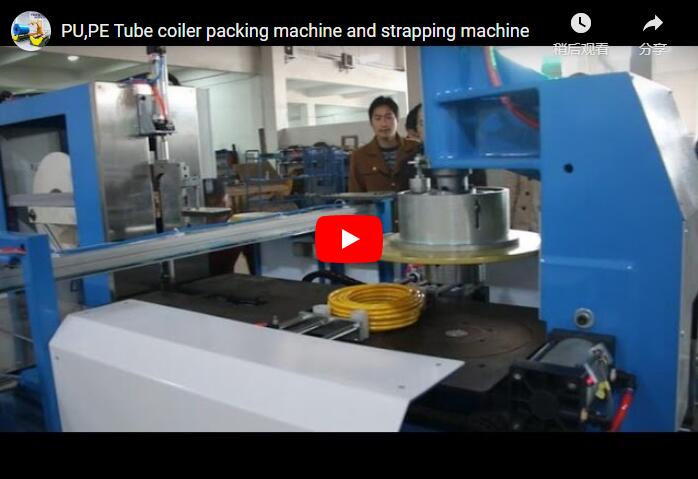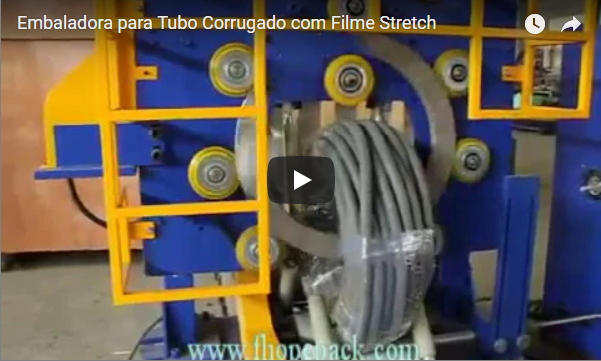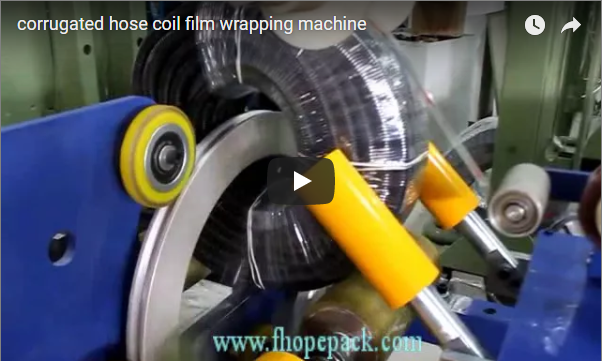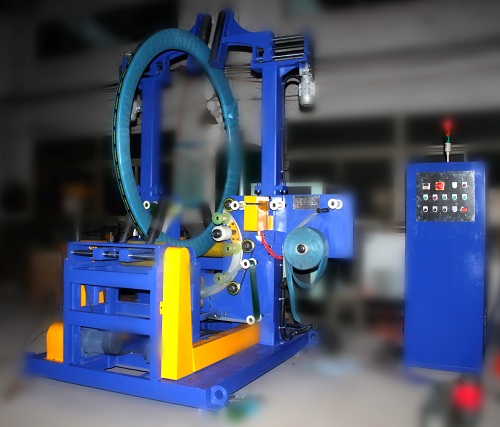Maximizing Uptime and ROI: A Comprehensive Guide to Coil Wrapping Machine Maintenance and Cleaning
Introduction: The Critical Role of Proactive Maintenance
In modern manufacturing and logistics, the operational efficiency of machinery like the coil wrapping machine is paramount. These systems are pivotal in protecting valuable coil products during transit and storage. However, maximizing their performance and lifespan hinges on diligent, proactive maintenance and cleaning. Neglecting these essential procedures can lead to unscheduled downtime, reduced packaging quality, increased operational costs, and potential safety hazards—outcomes that directly impact profitability and customer satisfaction. As highlighted in various industrial maintenance studies, implementing a structured preventive maintenance program can reduce equipment breakdowns by up to 70% and decrease maintenance costs significantly.
This guide outlines a comprehensive, professional approach to maintaining and cleaning your semi-automatic coil wrapping machine, drawing upon industry best practices and engineering principles. It aims to enhance operational reliability, ensure safety compliance, and ultimately, boost your return on investment.
Please note: The following procedures are primarily applicable to standard semi-automatic coil wrapping machines. For maintenance protocols specific to fully automatic systems or highly customized configurations, please consult directly with our technical support team or refer to specialized documentation.
1. Proactive Routine Inspections: The First Line of Defense
Regular, systematic inspections are the cornerstone of any effective preventive maintenance strategy, aligning with principles often cited in reliability-centered maintenance (RCM) frameworks. These checks allow for the early detection of wear, potential malfunctions, or deviations from optimal operating parameters.
Frequency: Monthly
Key Inspection Points:
- Structural Integrity: Visually inspect the machine frame, support structures, and guards for any signs of damage, deformation, or loose fasteners. Ensure all safety guards are securely in place and functional.
- Mechanical Components: Check belts, chains, gears, bearings, and rollers for visible wear, proper tension, alignment, and any unusual noises during manual movement (if safe and possible).
- Electrical Connections: Examine wiring harnesses, conduits, and connection points for abrasion, cuts, secure fittings, and signs of overheating. Verify the integrity of emergency stop buttons and safety interlocks.
- Pneumatic/Hydraulic Systems (if applicable): Check hoses and fittings for leaks, wear, or damage. Monitor pressure gauges to ensure they are within the specified operating range.
2. Strategic Lubrication: Minimizing Wear and Tear
Friction is an inherent challenge in any mechanical system. Proper lubrication, as detailed in tribology research and numerous machinery handbooks, creates a protective film between moving surfaces, drastically reducing friction, heat generation, and component wear. Adhering to the manufacturer's lubrication schedule and specifications is non-negotiable for long-term reliability.
Frequency: Every 6 Months (or as per manufacturer's specific recommendations)
Procedure:
- Identify Lubrication Points: Consult the machine's operation manual to locate all required lubrication points (e.g., bearings, slide ways, gearboxes).
- Select Correct Lubricant: Use only the type and grade of lubricant specified by the manufacturer. Using incorrect lubricants can be detrimental, potentially causing increased wear or component failure (Patent US5368133A discusses specific lubrication systems in wrapping machines).
- Apply Appropriately: Clean lubrication points before applying fresh lubricant. Avoid over-lubrication, which can attract contaminants and potentially damage seals. Ensure lubricant is applied evenly and reaches the intended surfaces.
3. Meticulous Component Cleaning: Ensuring Functional Integrity
Accumulated dust, grease, wrapping material residue, and other environmental contaminants can severely impede machine performance and longevity. Regular cleaning is not merely cosmetic; it's essential for preventing sensor malfunctions, ensuring efficient heat dissipation, and avoiding mechanical jams.
Frequency: Weekly
Procedure:
- Safety First: Ensure the machine is powered down and locked out/tagged out (LOTO) according to safety protocols before cleaning.
- Remove Debris: Use soft brushes, vacuum cleaners, and compressed air (use cautiously around sensitive components like sensors) to remove loose dust and debris from all accessible areas, including guide rollers, tracks, and control panels.
- Address Residue: Use manufacturer-approved cleaning agents and lint-free cloths to wipe down surfaces, particularly those in contact with the wrapping film or adhesives. Pay close attention to sensors, optical components, and drive mechanisms.
- Hard-to-Reach Areas: Utilize appropriate tools to clean crevices and internal areas where contaminants might accumulate.
4. Ring Assembly Health: Monitoring Rotation and Acoustic Signatures
The rotating ring assembly is the heart of the coil wrapping process. Its smooth and consistent operation is critical. Monitoring its movement and sound profile can provide early warnings of developing issues, a concept borrowed from condition monitoring practices.
Frequency: Weekly Check; Annual Component Review (approx.)
Procedure:
- Observe Rotation: Operate the ring (if safe during a maintenance check or observe during operation) and check for smooth, consistent speed without hesitation, jerking, or binding.
- Listen for Anomalies: Pay attention to the sound profile. Unusual grinding, whining, or clicking noises can indicate worn bearings, drive wheel issues, misalignment, or debris in the track. Research papers on acoustic emission analysis often link specific sound patterns to failure modes.
- Driving Wheel Inspection: Check the condition and alignment of the driving wheels that support and rotate the ring. Adjust alignment if necessary.
- Component Replacement: Based on usage intensity and observations, anticipate the need to replace wear-prone components like support rollers or drive wheels approximately annually to maintain optimal performance.
5. Cutting and Sealing Systems: Precision and Reliability
The mechanisms responsible for cutting and sealing the wrapping material are crucial for package integrity and material efficiency. Malfunctions here lead directly to waste, insecure loads, and potential line stoppages.
Frequency: Monthly
Procedure:
- Cutter Inspection: Examine the cutting blade(s) for sharpness, chips, or excessive wear. Ensure it is securely fastened. Dull or damaged blades result in poor cuts, film tearing, and increased strain on the mechanism. Sharpen or replace as needed, following manufacturer guidelines. Some advanced systems utilize specific cutter designs (e.g., Patent US6938397B2 for film severing).
- Heater Performance: If the machine uses a heat-sealing mechanism, verify its proper function. Check for consistent temperature (if adjustable and measurable), clean heating elements, and intact wiring. Poor sealing compromises package security.
6. Electrical Integrity and Sensor Accuracy: The Control Backbone
The electrical system, including sensors and controls, governs the machine's operation, safety, and automation features. Maintaining its integrity is vital for reliable and safe performance, adhering to standards like NFPA 79 (Electrical Standard for Industrial Machinery).
Frequency: Annually (detailed inspection)
Procedure:
- Cable and Connector Check: Thoroughly inspect all electrical cables for signs of wear, abrasion, cracking, or exposure. Ensure all connectors are secure, clean, and free from corrosion.
- Sensor Verification: Clean sensor lenses/faces. Check sensor alignment and mounting security. Test sensor functionality (e.g., product detection, position limits) to ensure accurate signals are being sent to the control system.
- Control Panel: Inspect the control panel internally (by qualified personnel) for dust buildup, loose connections, or signs of component overheating.
- Safety Circuits: Regularly test emergency stops and safety interlocks to confirm they function correctly, ensuring operator safety as mandated by OSHA regulations.
7. Optimizing Film Tension Control: Ensuring Package Quality
Consistent and appropriate film tension is critical for secure wrapping, load stability, and efficient material usage. Incorrect tension can lead to film breaks, loose or telescoping wraps, product damage, or excessive material consumption. Modern machines often feature sophisticated tension control systems (ref: Packaging Digest articles on stretch wrapping technology).
Frequency: Check Every Wrap Cycle; Adjust as needed; Mechanism Check Every 6 Months
Procedure:
- Operational Checks: During operation, observe the film application. Is the tension sufficient to secure the load without crushing the product or breaking the film?
- Adjust Tension Settings: Utilize the machine's tension adjustment mechanism (manual or electronic) as needed based on the product, film type, and wrapping requirements.
- Mechanism Inspection (6-Month): Inspect the tensioning rollers, dancers, and braking system (mechanical or electronic) for wear, smooth operation, and proper responsiveness. Clean rollers to prevent slippage. Refer to the manual for specific checks related to the tension control system type.
Conclusion: Cultivating Operational Excellence Through Maintenance
Adhering to a rigorous maintenance and cleaning schedule for your coil wrapping machine transcends routine tasks; it represents a strategic investment in operational excellence. Consistent application of these procedures, rooted in sound engineering and maintenance principles, directly contributes to:
- Increased Uptime: Minimizing unexpected breakdowns and production halts.
- Extended Equipment Lifespan: Protecting your capital investment.
- Enhanced Safety: Reducing risks associated with malfunctioning equipment.
- Consistent Package Quality: Ensuring product protection and customer satisfaction.
- Optimized Material Usage: Reducing waste from film breaks or poor application.
- Lower Total Cost of Ownership: Preventing costly emergency repairs and premature replacement.
By integrating these practices into your standard operating procedures, you ensure your coil wrapping machine remains a reliable and efficient asset, bolstering your operational capacity and contributing positively to your bottom line. Embracing a culture of proactive maintenance is fundamental to achieving sustained manufacturing and logistical success in today's competitive landscape.






